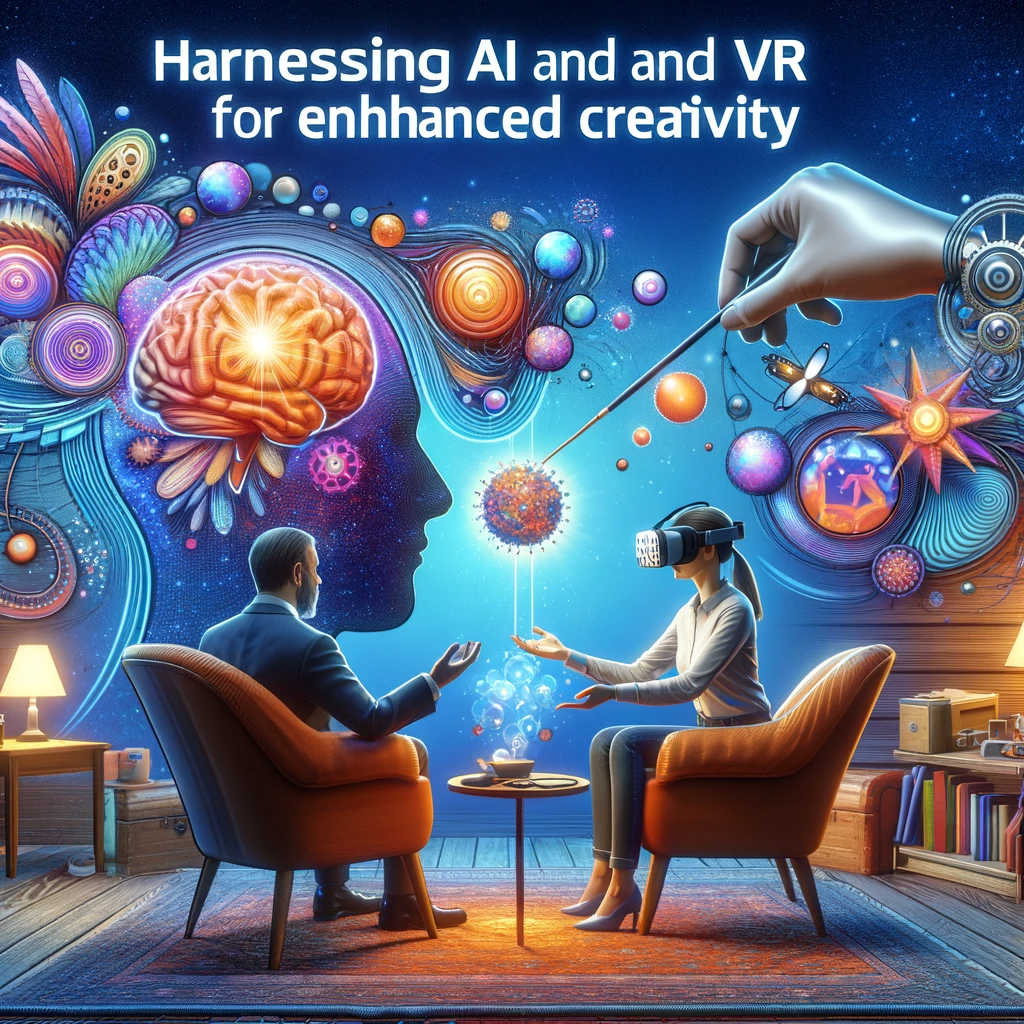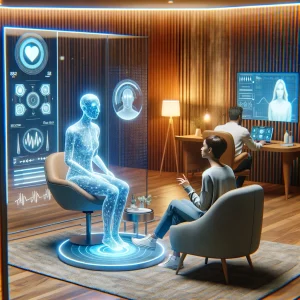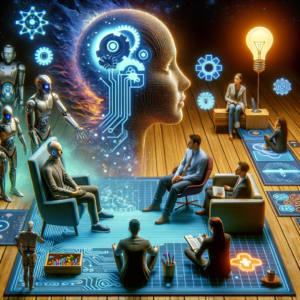In the realm of mental health and counseling, the integration of advanced technologies like Artificial Intelligence (AI) and Virtual Reality (VR) is opening new doors for creative and effective therapeutic approaches. Reflecting on my journey from creating worksheets and therapeutic methods for a friend battling drug addiction and dissociation to starting a self-awareness company, I’ve realized how these personal techniques paralleled many established therapeutic practices. This realization, coupled with the rapid technological advancements in healthcare, has led me to envision a future where AI and VR significantly enhance counseling techniques, especially for teenagers.
Breathing Room & VR
The concept of a ‘Breathing Room’ in counseling is about creating a safe, familiar space for teenagers to open up. VR’s potential in this area is immense. It allows clients to create their own space in a virtual setting alongside their counselor. This approach is especially beneficial for teenagers who might struggle with creativity or feel uncomfortable in traditional counseling environments. Research has shown promising results for VR in treating conditions like PTSD, indicating its potential in helping teenagers navigate complex emotional landscapes.
Talk Meter & AI/AR
Counseling often involves helping clients articulate their feelings and thoughts, a task that can be daunting for many, especially young clients. The future might see the replacement of traditional tools like laminated pictures with augmented reality (AR) projections and AI-enhanced Talk Meters in counseling spaces. These technologies could offer interactive, customized experiences, enabling teenagers to better communicate their readiness and feelings. AI’s ability to provide real-time feedback could also help counselors adapt more effectively to their clients’ needs.
Music & AI/VR
Music’s profound impact on emotions is well-known, and the advent of AI and VR is set to revolutionize how we experience music. For counselors, embracing these technologies could be key in connecting with teenagers. AI and VR can create personalized musical experiences, complete with visualizations or avatars, allowing clients to engage with their favorite music in novel ways. Imagine a counseling session where the counselor and client attend a virtual concert together, creating a shared experience that strengthens their bond.
Paper Bag Story & AI/VR
The traditional ‘Paper Bag Story’ technique, involving physical materials like paper bags and magazines, could be transformed through AI and VR. These technologies could allow clients to select themes, objects, and scenarios in a virtual space, creating interactive collages and stories. This approach not only aligns with the technological trends among adolescents but also enhances creative self-exploration and reflection, making the counseling process more engaging and relatable.
Social Media Profile & AI
In today’s digital age, teenagers’ interaction with social media is a crucial aspect of their lives. AI can analyze social media usage patterns, providing counselors with insights into their clients’ emotional states, interests, and potential mental health risks. This analysis can uncover objective information that might otherwise be overlooked, offering a comprehensive view of a teenager’s mental and emotional well-being.
Conclusion
The integration of AI and VR in counseling presents an exciting frontier in mental health care. These technologies offer innovative ways to enhance traditional counseling techniques, making them more effective, engaging, and tailored to individual needs. As we embrace these advancements, we open up a world of possibilities for creative and impactful counseling, especially for the younger generation who are already deeply intertwined with technology. The future of counseling is not just about adapting to new technologies but creatively integrating them to enrich the therapeutic experience.






